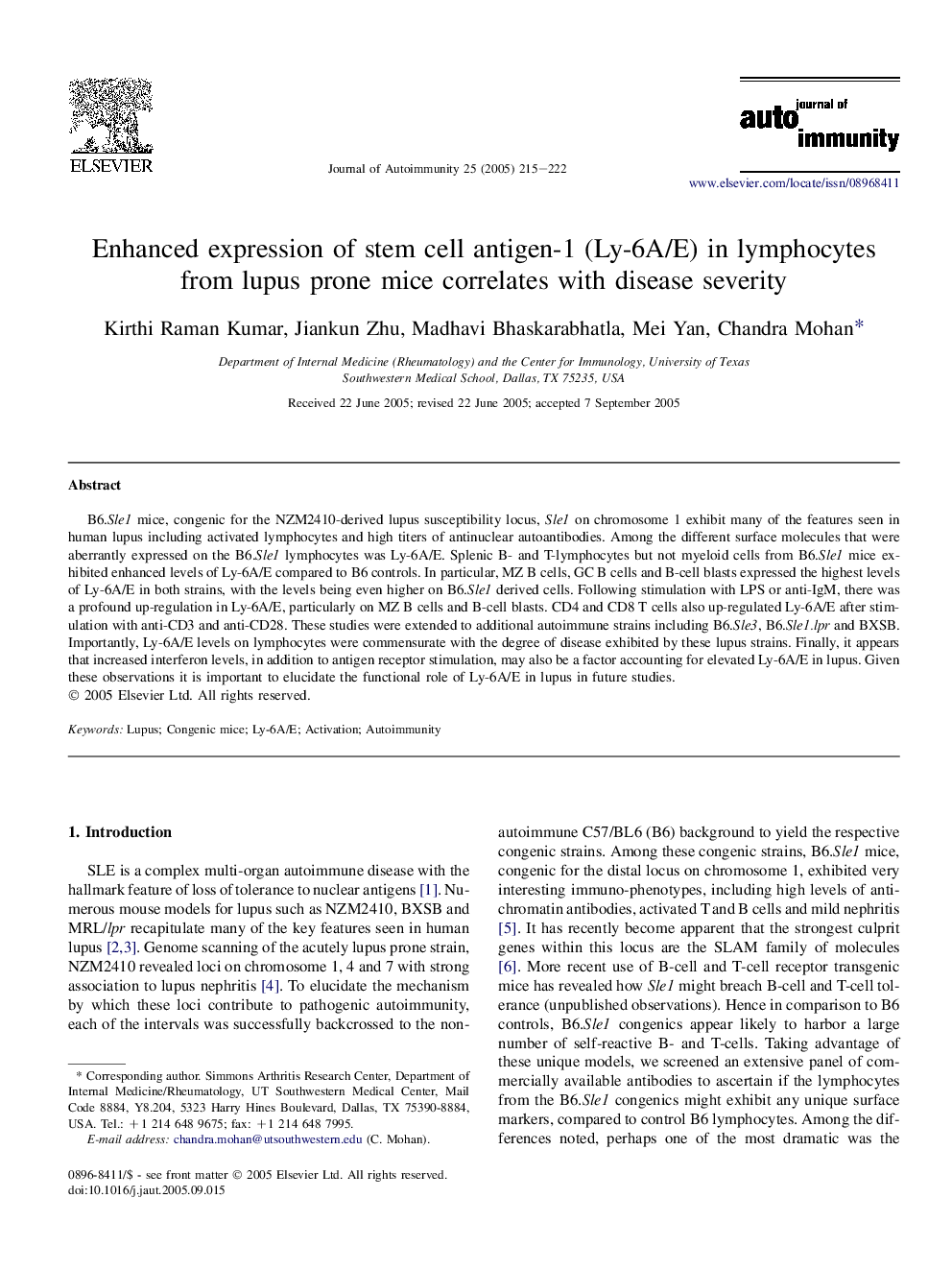| Article ID | Journal | Published Year | Pages | File Type |
|---|---|---|---|---|
| 9267895 | Journal of Autoimmunity | 2005 | 8 Pages |
Abstract
B6.Sle1 mice, congenic for the NZM2410-derived lupus susceptibility locus, Sle1 on chromosome 1 exhibit many of the features seen in human lupus including activated lymphocytes and high titers of antinuclear autoantibodies. Among the different surface molecules that were aberrantly expressed on the B6.Sle1 lymphocytes was Ly-6A/E. Splenic B- and T-lymphocytes but not myeloid cells from B6.Sle1 mice exhibited enhanced levels of Ly-6A/E compared to B6 controls. In particular, MZ B cells, GC B cells and B-cell blasts expressed the highest levels of Ly-6A/E in both strains, with the levels being even higher on B6.Sle1 derived cells. Following stimulation with LPS or anti-IgM, there was a profound up-regulation in Ly-6A/E, particularly on MZ B cells and B-cell blasts. CD4 and CD8 T cells also up-regulated Ly-6A/E after stimulation with anti-CD3 and anti-CD28. These studies were extended to additional autoimmune strains including B6.Sle3, B6.Sle1.lpr and BXSB. Importantly, Ly-6A/E levels on lymphocytes were commensurate with the degree of disease exhibited by these lupus strains. Finally, it appears that increased interferon levels, in addition to antigen receptor stimulation, may also be a factor accounting for elevated Ly-6A/E in lupus. Given these observations it is important to elucidate the functional role of Ly-6A/E in lupus in future studies.
Related Topics
Life Sciences
Immunology and Microbiology
Immunology
Authors
Kirthi Raman Kumar, Jiankun Zhu, Madhavi Bhaskarabhatla, Mei Yan, Chandra Mohan,
